▼ FPC to revive newborn health care in India [07-31-17]
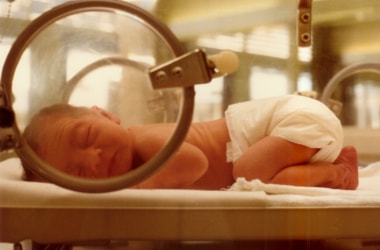 The Union Ministry of Health and Family Welfare has released Operational Guidelines for Planning and Implementation of Family Participatory Care (FPC) for improving newborn health. The Union Ministry of Health and Family Welfare has released Operational Guidelines for Planning and Implementation of Family Participatory Care (FPC) for improving newborn health.
The guidelines are for all stakeholders involved in the process of planning and delivering newborn care.
They will serve as a guiding document for those intending to introduce FPC in their facility as an integral part of facility based newborn care.
Family Participatory Care/ FPC has emerged as an important concept of health care as it provides partnership between health care staff and families in care of sick newborns admitted in the Special Newborn Care Units (SNCU).
Under it, the capacities of parents-attendants are built in newborn care through a structured training programme (training guide and audio-visual module).
Sick and newborn are highly vulnerable and require careful nurturing in order to survive the neonatal period and first year of life.
Under National Health Mission (NHM), more than 700 state of the art SNCU have been established across the country to provide 24 X 7 comprehensive care to the newborns by dedicated trained staff.
When parents are trained, during the stay of their babies in the hospital, to provide supportive care to their newborns, it will help in not only to improve survival of the babies after discharge but also cater psycho-social and developmental needs of the newborn.
The Operational Guidelines provides details of infrastructure, training, role of health care providers and steps in the operationalisation of FPC in the newborn care unit.
It also addresses various aspects of attitudes, infrastructural modifications and practice that will help in establishing FPC at SNCU.
It also includes sensitization of State and District Managers on FPC, prioritization of SNCUs for initiating FPC, making required infrastructural enhancement in SNCU, creating family participatory care environment in SNCU.
It also seeks to ensure availability of supplies for parents-attendants, role of healthcare providers for FPC implementation, training of SNCU staff for SNCU and institutional support for FPC.
The guidelines will be shared with the states for implementation to further improve the quality of care provided in the SNCUs across the country.
|
▼ Union cabinet approves minimum wage across sectors [07-28-17]
The Union Cabinet has approved the Labour Code on Wages Bill which will ensure a minimum wage across all sectors by integrating existing labour related laws.
The Labour Code on Wages Bill consolidates the Minimum Wages Act, 1948, the Payment of Bonus Act, 1965, the Payment of Wages Act, 1936 and the Equal Remuneration Act, 1976.
At present, laws on wages do not cover workers getting monthly wage of more than Rs 18,000.
Moreover, these laws are only applicable for scheduled industries or establishments. Even there are about half a dozen definitions of wages in various acts across the Centre and states, which employers have to grapple with.
The Second National Commission on Labour has recommended that the existing labour laws should be broadly grouped into four or five labour codes on Wages; Industrial Relations; Social Security & Welfare and Safety and Working Conditions on functional basis.
Labour Code: Know More - Under the Labour Code on Wages Bill, the Union Labour Ministry is planning to streamline the definition of wages by amalgamating four wage-related statutes.
- The code empowers the Centre to set a minimum wage across sectors, and states will have to maintain that. However, states will be able to provide higher minimum wage in their jurisdiction than fixed by the Centre since labour is subject in the concurrent list.
- The Labour Code on Wages Bill also marks the first major initiative of Union Government in amalgamating labour laws for improving the ease of doing business as well as ensuring universal minimum wage to all.
- The minimum wage will be applicable on all classes of workers, even workers getting monthly pay of higher than Rs 18,000 will be legally entitled to a minimum wage.
- The proposed legislation is expected to benefit over 4 crore employees across the country.
|
▼ The Collection of Statistics (Amendment) Bill 2017 passed [07-27-17]
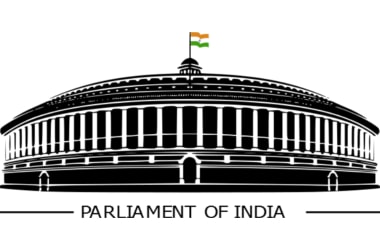 The parliament has passed The Collection of Statistics (Amendment) Bill, 2017 after it was approved by the Rajya Sabha. The parliament has passed The Collection of Statistics (Amendment) Bill, 2017 after it was approved by the Rajya Sabha.
The Lok Sabha has passed it earlier.
The bill aims at amending the Collection of Statistics Bill, 2008, which facilitates the collection of statistics related to social, economic, demographic, scientific and environmental aspects, by central, state and local governments.
It also allows the appointment of statistics officers to collect information and contains provisions to ensure security of information.
The Bill extends jurisdiction of the parent act to the state Jammu and Kashmir for the collection of statistics pertaining to subjects under the Union (List-I) or the Concurrent list (List-II) of the Constitution.
These subjects include citizenship, banking, education, labour and forests as applicable to J&K.
It adds provisions for the appointment of a nodal officer by the Union or state government. The function of nodal officer is to coordinate and supervise statistical activities under the government which has appointed him.
Further, the Union government can also determine the powers and duties of the nodal officer. Use of information:
The Bill removes provision from parent act dealing with information collected under it only is used for statistical purposes.
It also allows the Union government to determine the manner in which such information collected will be used for statistical purposes.
|
▼ CCEA approves SECC 2011 revision [07-27-17]
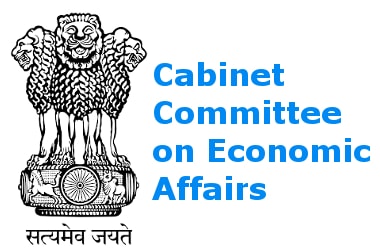 The Cabinet Committee on Economic Affairs, chaired by the Prime Minister Shri Narendra Modi has approved the proposal of Department of Rural Development. The Cabinet Committee on Economic Affairs, chaired by the Prime Minister Shri Narendra Modi has approved the proposal of Department of Rural Development.
This is for revision of cost of Socio Economic and Caste Census 2011 (SECC 2011).
It provides for:
(a) Revising the cost of SECC 2011 to Rs. 4893.60 crore from the approved estimated expenditure of Rs.3,543.29 crore within the indicative cost of Rs.4,000 crore as approved by the Government.
(b) Approval of time and cost overrun and consequential revision in the upper limit of cost per record to the consortium of Central Public Sector Undertakings.
The SECC -2011 project has been concluded on 31.3.2016. The cost has already been committed and the project has met all its milestones.
Before the availability of SECC data, correct identification of eligible beneficiaries was a major challenge.
SECC database provides an authentic list of information disclosed by the households for identifying and prioritising beneficiaries under various schemes run by Ministry of Rural Development and other Departments in the Government.
How It Works
- Ranking of Households is made through a three-step process involving thirteen Exclusion parameters for identifying not-poor households.
- Also selected are five Automatic Inclusion parameters for identifying poorest of the poor households and seven Deprivation Criteria for identifying poor households.
- Government of India has advised States to use this process, SECC data and its TIN number of households for identification of poor under Deendayal Antyodaya Yojana (DAY), Pradhan Mantri Awaas Yojana-Gramin(PMAY-G), etc.
- Use of SECC-2011 has brought transparency in selection of beneficiary and its structured incidence with DBT having maximal impact on governance and accountability
Need for SECC- Before the availability of SECC -21011 data, Below Poverty Line (BPL) list prepared in 2002, by States/UTs was being used for identifying beneficiaries of development programmes and schemes.
- This is including Pradhan Mantri Awaas Yojana-Gramin (PMAY-G)) and National Social Assistance Programme(NSAP).
- The 2002 BPL list attracted claims of biases.
- It was decided by the Government on 19th May to launch a Socio Economic and Caste Census 2011 in order to get data for ranking of households for receiving benefits from the Government.
- To avoid exclusion and inclusion errors, the SECC 2011 elicited information on identified parameters from each household for identification of deprivation and multi-dimensionality of poverty.
Importance of SECC- SECC allows ranking of households based on their socio economic status.
- SECC-2011 provides the government the names and number of families in each Panchayat and details their status on seven deprivation parameters.
- The advantage of SECC is that it provides for programme specific customized priority list to suit programme objective and budget space to address specific deprivation.
- Ministry of Rural Development has generated customized priority list for Pradhan Mantri Awaas Yojna-Gramin(PMAY-G) and Deen Dayal Antyodaya Yojana - National Rural Livelihoods Mission (DAY-NRLM) from SECC following due selection process approved by the Government.
|
▼ Aajeevika Grameen Express Yojana launched under DAY-NRLM [07-26-17]
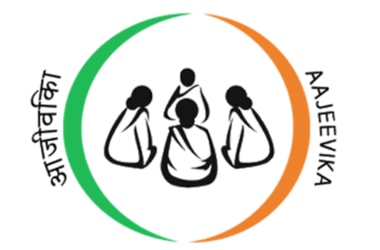 The Ministry of Rural Development will launch a new sub-scheme under Deendayal Antyodaya Yojana – National Rural Livelihoods Mission (DAY-NRLM). The Ministry of Rural Development will launch a new sub-scheme under Deendayal Antyodaya Yojana – National Rural Livelihoods Mission (DAY-NRLM).
It will be named as “Aajeevika Grameen Express Yojana (AGEY)”.
The main objectives of AGEY are to provide an alternative source of livelihoods to members of Self Help Groups (SHGs) under DAY-NRLM.
This is facilitating them to operate public transport services in backward rural areas.
The Government is implementing DAY-NRLM across the country in all States and Union Territories (except Delhi and Chandigarh).
Under DAY-NRLM, till date, 34.4 lakh women SHGs have been promoted under the programme.
|
▼ Mobile app Aarambh launched for revamping rural roads [07-25-17]
 This Mobile Phone App aims at use of GIS based mapping for making road inventories, condition surveys, and producing cost estimates and other relevant data for preparation and monitoring of annual road maintenance plans. This Mobile Phone App aims at use of GIS based mapping for making road inventories, condition surveys, and producing cost estimates and other relevant data for preparation and monitoring of annual road maintenance plans.
Its usage would greatly enhance the service delivery of the state level institutions in planning and implementing performance based rural roads maintenance contracts.
The Mobile App would greatly help in improving the service delivery for road maintenance in all the States.
Currently, there is collaboration between ILO and Ministry of Rural Development, particularly PMGSY, MGNREGS and PMAY(G).
The newly launched mobile application would simplify the maintenance management of rural roads.
The Ministry reiterated the resolve of Government of India to connect all eligible habitations in rural areas by constructing good quality roads by 2019.
The States are being encouraged to put in place robust mechanism to ensure routine and periodic maintenance of these roads even after the first five-year period, after their construction is over.
Ministry of Rural Development
- The Ministry of Rural Development, a branch of the Government of India, is entrusted with the task of accelerating the socio-economic development of rural India.
- Its focus is on health, education, drinking water, housing and roads.
- Website: rural.nic.in
- Jurisdiction: India
- Headquarters: Krishi Bhawan, New Delhi
- Cabinet minister: Narendra Singh Tomar
- Minister of state: Ram Kripal Yadav
- Programs: National Rural Employment Guarantee Act, 2005, MORE
- Departments: Department of Rural Development, Department of Land Resources
|
▼ SHe Box for combatting sexual harassment in the workplace [07-25-17]
 The Minister of Women & Child Development, Smt Maneka Sanjay Gandhi launched an online complaint management system titled Sexual Harassment electronic–Box (SHe-Box) for registering complaints related to sexual harassment at workplace in New Delhi. The Minister of Women & Child Development, Smt Maneka Sanjay Gandhi launched an online complaint management system titled Sexual Harassment electronic–Box (SHe-Box) for registering complaints related to sexual harassment at workplace in New Delhi.
The complaint management system has been developed to ensure the effective implementation of Sexual Harassment of Women at Workplace (Prevention, Prohibition and Redressal) Act (the SH Act), 2013.
This portal is an initiative to provide a platform to women working or visiting any office of Central Government (Central Ministries, Departments, Public Sector Undertakings, Autonomous Bodies and Institutions etc.) to file complaints related to sexual harassment at workplace under the SH Act.
Those who had already filed a written complaint with the concerned Internal Complaint Committee (ICC) constituted under the SH Act are also eligible to file their complaint through this portal.
The SHe-Box portal can be accessed at the link given below:
http://www.wcd-sh.nic.in/
The facility has been extended to employees of Central Government, the scope of the portal will soon be extended to women employees of private sector also.
The WCD Minister said that there are some surveys, which give the extent of sexual harassment of women at workplace.
However, the WCD Ministry will carry out a national level survey to asses and understand the magnitude of the problem.
This portal (SHe-Box) is an effort to provide speedier remedy to women facing sexual harassment at workplace as envisaged under the SH Act.
Once a complaint is submitted to the portal, it will be directly sent to the ICC of the concerned Ministry/Department/PSU/Autonomous Body etc. having jurisdiction to inquire into the complaint.
Through this portal, WCD as well as complainant can monitor the progress of inquiry conducted by the ICC.
Government of India is the largest employer in the country employing 30.87 lakh people to carry out its various functions.
As per the Census of Central Government employees, 2011, women constitute 10.93% (3.37 lakhs) of the total regular Central Government employees.
Initiatives to Combat Sexual Harassment in Workplace
- The WCD Ministry has taken several measures to ensure implementation of Sexual Harassment of Women at Workplace Act.
- The Ministry has published a Handbook on the SH Act with the objective to provide information about the provisions of the Act in an easy to use practical manner.
- Further, the Ministry in collaboration with Institute of Statistical Training and Management (ISTM), New Delhi has prepared a training module to build the capacity of government officials above the provisions of the SH Act and develop in them professional competence to implement the same. Recently, on 5th May, 2017, the Ministry in collaboration with ISTM organised a day long workshop for chairpersons of Internal Complaint Committee constituted in various Ministries/Departments of Central Government.
- Besides, in order to create wide spread awareness about the Act across the country both in organized and unorganised sector, MWCD has identified a pool of 29 resource institutions willing to provide capacity building programs i.e. training, workshops etc on the SH Act.
How does SHe-Box Work?- The SHe-Box will provide a platform to these empanelled institutes/organisations to share their capacity building activities with the Ministry which in turn will be able to monitor the activities of these institutes/organizations so empanelled from across the country.
- As of now, as per the reports received, in the past 5 months, the empanelled institutes/organisations/companies have organised 35 capacity building exercises which were attended by approximately 1700 people.
- Ensuring the dignity and safety of women must be first priority for any digital society. Towards realisation of the vision of the Digital India programme, the Ministry is promoting utilisation of information and communication technology to achieve the goal of gender equality and women empowerment.
- It is an effort to utilise the digital space to enable speedier response to the complaints of women against sexual harassment at workplace.
|
▼ RTE (Amendment) Bill passed, LS makes education compulsory for children [07-24-17]
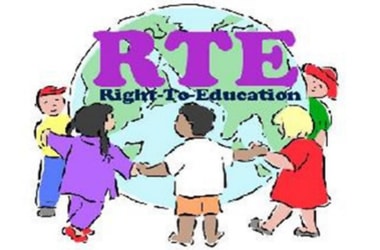 The Lok Sabha has passed The Right of Children to Free and Compulsory Education (Amendment) Bill, 2017. The Lok Sabha has passed The Right of Children to Free and Compulsory Education (Amendment) Bill, 2017.
The Bill amends the Right of Children to Free and Compulsory Education Act (RTE), 2009 to extend the deadline for teachers to acquire the prescribed minimum qualifications for appointment.
Through the amending measure inadequately qualified teachers as on March 31, 2015, working after enactment of the RTE Act, 2009 are being given last chance to acquire minimum qualifications within a period of four years i.e. by March 31, 2019 to hold their jobs as teachers.
The amendments to RTE Act, 2009 will enable the in-service untrained elementary teachers to complete their training and ensure that all teachers at the elementary level have certain minimum standard of qualifications.
It will ensure that all teachers attain minimum qualifications as considered necessary to maintain the standard of teaching quality.
It will ultimately result in improvement in overall quality of teachers, teaching processes and learning outcomes of children.
It will reinforce Government’s emphasis on improvement of quality of elementary education.
The RTE Act, 2009 envisages free and compulsory elementary education to every child in the age group of 6-14 years.
The section 23(2) of the Act specifies that all teachers at elementary level at commencement of this law if did not possess minimum qualifications under it need to acquire these within a period of five years i.e. by March 2015.
However, several state governments have reported that 11.00 lakh teachers at the elementary level are still untrained out of a total number of 66.41 lakh teachers.
|
▼ PMVVY launched, senior citizens guaranteed interest of 8% [07-24-17]
 The Union Finance Ministry has launched Pradhan Mantri Vaya Vandana Yojana (PMVVY), a pension scheme exclusively for senior citizens aged 60 years and above. The Union Finance Ministry has launched Pradhan Mantri Vaya Vandana Yojana (PMVVY), a pension scheme exclusively for senior citizens aged 60 years and above.
Under this scheme, senior citizens will get a guaranteed interest of 8% for 10 years depending upon the investment made by them.
This PMVVY scheme will be available from May 4, 2017 to May 3, 2018. Life Insurance Corporation of India (LIC) has been given the sole privilege to operate the scheme.
It can be purchased offline as well as online through LIC. This scheme provides an assured return of 8% per annum payable monthly for 10 years on single lumpsum premium ranging from INR 150000 (minimum) to INR750000 (maximum).
Pension (minimum: INR 1000/ month; maximum: INR 5000) will be payable at the end of each period, during the policy term of 10 years, as per the frequency of monthly, quarterly, half-yearly, yearly as chosen by the pensioner at the time of purchase.
It is exempted from goods and services (GST) tax. It will offer senior citizens more avenues to earn steady regular income at a time of falling interest rates.
On survival of the pensioner to the end of the policy term of 10 years, the purchase price of the scheme along with the final pension instalment will be payable.
The scheme also offers loan up to 75% of the purchase price after 3 policy years (to meet the liquidity needs).
Loan interest will be recovered from the pension instalments and loan will be recovered from claim proceeds.
The scheme allows for premature exit for the treatment of any critical terminal illness of self or spouse. On such premature exit, 98% of the purchase price would be refunded.
On death of the pensioner during the policy term of 10 years, the purchase price should be paid to the beneficiary.
|
▼ LS passes IIIT-PPP Bill 2017 [07-21-17]
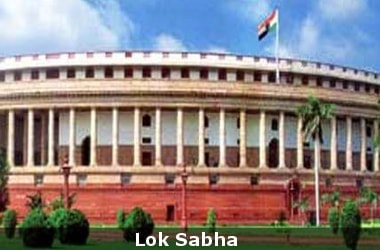 The Lok Sabha passed the Indian Institute of Information Technology Public Private Partnership (IIIT-PPP) Bill, 2017 to allow 15 IIITs established on a PPP model to grant degrees and get statutory status. The Lok Sabha passed the Indian Institute of Information Technology Public Private Partnership (IIIT-PPP) Bill, 2017 to allow 15 IIITs established on a PPP model to grant degrees and get statutory status.
The bill also seeks to grant institute of national importance status to IIITs on the lines of the Indian Institutes of Technology (IITs) and National Institutes of Technology (NITs).
The Union Government had initiated the opening of 20 IIITs with private partnership of which 15 are already operational.
These engineering and technology schools were established at a cost of INR 128 crore each.
The centre had contributed 50% of the amount, states 35% and private partners remaining 15% (i.e. 50:35:15 ratio).
However, these institutes were not been eligible to grant degrees.
The bill define PPP as a partnership under a scheme of the centre for establishment of institutes through collaboration between the centre, the state government and industry partners such as individuals, trusts, companies or societies.
State government will identify at least one industry partner for collaboration to establish an institute and submit a proposal to the centre.
The centre will examine the proposal based on certain criteria. The centre may reject or accept the proposal with modifications.
Upon such acceptance, the centre will enter into a MoU with the concerned state government and industry partners to establish proposed institute.
The industry partner will have powers for co-creating programs as per the requirements of the industry; actively participating in the governance of the institutes; and funding and mentoring startups in the institutions.
Board of Governors will be the principal policy making and executive body of the institute. The Board of each institute will comprise up to 15 members including Chairman nominated on the recommendation of the centre.
Senate will be the principal academic body of each institute. It will specify the criteria and procedure for admission to courses of study; recommend to the Board, creation of teaching and other academic posts; and specify academic content of programmes and courses of study.
Coordination Forum will deliberate on matters of common interest to all the institutes. It will advise the centre to include or exclude an institution from the schedule of the Bill.
Each institute will maintain a fund consisting of funds from the government and other sources including grants, fees and donations.
Further, each institute will create corpus fund of the net income of the institute and donations for its long term sustainability.
|
▼ National Bamboo Mission renamed and revamped [07-19-17]
 National Bamboo Mission renamed as National Agro-Forestry & Bamboo Mission (NABM) is being implemented as per the set objectives and targets of the Mission. National Bamboo Mission renamed as National Agro-Forestry & Bamboo Mission (NABM) is being implemented as per the set objectives and targets of the Mission.
As per available reports 3,61,791 ha. area have been covered in forest & non-forest land, 91,715 ha. area taken up for improvement of existing stock for higher productivity (forest & non-forest areas) under the Mission against targets of 3,62,848 ha., 69,410 ha. respectively.
Under the Mission, 108 nos. of markets (Bamboo wholesale & retail markets near villages, etc.) have been established for providing marketing avenues to bamboo farmers for their raw bamboo as well as finished products.
Besides, efforts are being made to popularize bamboo products through participation in domestic/national/international trade fairs.
Under the Mission, Steps have already been taken & are being taken to provide assistance to farmers/bamboo growers for nursery establishment.
Also on the anvil are plantations in non-forest area, imparting training for preparation of nurseries & bamboo plantations, establishing of bamboo markets for farmer products, etc.
Bamboo: Know More
- Scientific name: Bambusoideae
- Higher classification: Grasses
- Family: Poaceae
- Kingdom: Plantae
- Rank: Subfamily Bamboo’s roots helps to prevent soil erosion through rain water run-off
|
▼ RBI constitutes IAC to examine insolvency [07-19-17]
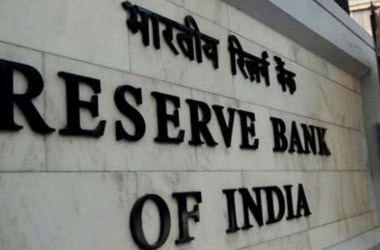 Reserve Bank of India (RBI) has constituted an Internal Advisory Committee (IAC), which arrived at an objective, non-discretionary criterion for referring accounts for resolution under Insolvency and Bankruptcy Code, 2016 (IBC). Reserve Bank of India (RBI) has constituted an Internal Advisory Committee (IAC), which arrived at an objective, non-discretionary criterion for referring accounts for resolution under Insolvency and Bankruptcy Code, 2016 (IBC).
In particular, the IAC recommended for IBC reference all accounts with fund and non-fund based outstanding amount greater than INR 5000 crore, with 60% or more classified as non-performing by banks as of March 31, 2016.
Accordingly, Reserve Bank of India has issued directions to certain banks for referring 12 accounts, qualifying under the aforesaid criteria, to initiate insolvency process under the Insolvency and Bankruptcy Code, 2016.
As regards the other non-performing accounts which do not qualify under the above criteria, the IAC recommended that banks should finalize a resolution plan within six months.
In cases where a viable resolution plan is not agreed upon within six months, banks should be required to file for insolvency proceedings under the IBC.
However, the names and details of borrowers are not disclosed as prescribed under section 45E of the Reserve Bank of India (RBI) Act, 1934 and Banking Laws.
These laws provide for the obligation of a bank or financial institution to maintain secrecy about the affairs of its constituents.
In respect of the above-mentioned 12 accounts, Reserve Bank of India has advised the banks to make provisions as under:
(a) 50 per cent for secured portion of the outstanding balance plus 100 percent for the unsecured portion.
(b) Provisions required to be maintained as per the extant Asset classification norms.
The additional provisions, as required in each case, should be proportionately spread over the remaining quarters of the current financial year, starting Q2.
This is so that the required provisions are fully in place by March, 2018.
The effect of the provisioning requirement prescribed in respect of the said 12 accounts would vary for each account and for the respective banks depending upon the current asset classification, current provisions held, security coverage etc.
|
▼ Rail Cloud project and e-grievance portal launched by Railways [07-13-17]
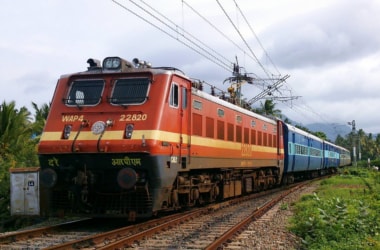 Minister of Railways Shri Suresh Prabhakar Prabhu launched the following Initiatives:- Minister of Railways Shri Suresh Prabhakar Prabhu launched the following Initiatives:-
1. RAIL CLOUD PROJECT.
2. NIVARAN-Grievance Portal (First IT Application on Rail Cloud).
3. Cashless treatment Scheme in Emergency (CTSE) Scheme and Handing over of 1st CTSE Card.
Salient Features of the Initiatives Launched
RailCloud
Indian Railway has started a strategic IT initiative, christened IR-OneICT, for enterprise wide digital single platform with an aim to improve customer satisfaction, improve revenue and effective, efficient and safe operations.
To achieve the goal of single digital platform for IR a few foundational projects need to be implemented first, establishment of RailCloud is one such project.
Cloud Computing is the emerging technology for faster and on demand commensurate deployment of Server resources which result in reduced cost.
Accordingly, RailCloud Phase-I has been sanctioned at the cost of Rs. 53.55 Cr under PH-17, DF(3) in FY 17-18. Potential benefits to Railways after implementation of RailCloud are:
- Faster and on-demand deployment of application- RailCloud will pave the way for swifter deployment of application (within 24 hrs as compared to conventional time running into weeks and months).
At the same time the cloud hardware and environment will be available for rigorous testing of the new applications. - Optimum use of Servers and storage- The technology enables maximising the usage of the available server and storage resulting in accommodation of bigger data and more applications within same server space.
- Utilization of existing infrastructure as part of Cloud- The existing resources available with railway will be subsumed in RailCloud thereby ensuring that expenditure is minimized in acquiring new resources.
- Rapid scalability and elasticity- Server and storage space will scale up and down as per the demand. This makes the system suitable to meet the higher demand at peak hours with less expenditure.
- IT Security enhancement and Standardization: The cloud shall be equipped with security features as per the latest GOI guidelines, the security features can be updated in one go for all the applications hosted on the cloud.
This will be resulting in enhanced security and stability with less expenditure and effort. - Cost reduction: The server and storage infrastructure will be deployed as per the requirement, resulting in substantial savings to railway as expenditure will be incurred as and when required.
This will be instead of upfront shelling out money on procurement of expensive servers. - Better User Experience: In Cloud, the server resources are constantly scaled up or down as per the no. of users logged on to the system. This ensures a better user experience to the customer.
The Managed Network and Virtual Desktop Interface (VDI) services are also being planned, in near future, for providing faster and more efficient work environment to each rail worker.
NIVARAN-Grievance Portal’First IT application on RailCloud‘NIVARAN-Grievance Portal’ is the first IT application to be launched on the RailCloud. It is the platform for resolution of service related grievances of serving and former railway employees. The existing application was hosted on a conventional server; it has been made cloud-ready and being migrated as the first cloud application of Indian Railways. It will save significant revenue and at the same time user experience will also improve. Cashless treatment Scheme in Emergency (CTSE) Railway provides Comprehensive Health Care Facilities to its beneficiaries through in-house health Institutions, supplementing with referrals to recognized hospitals whenever necessary. The beneficiaries include retired employees and their dependent family members. Large no. of retired beneficiaries lives in the newly developed suburbs of various cities. These parts of the city are often far away from the established Railway Health Institutions. In this scenario the RELHS beneficiaries coming to Railway Health Institutions in routine is acceptable, however in emergency situations, precious time (Golden Hour) is lost in travel. To provide immediate care to its retired employees in ‘Golden Hour’ Railway Board has decided to roll out a “Cashless treatment Scheme in Emergency’ (CTSE), in empanelled hospitals, for retired employees and their dependent family members. CTSE Scheme: Know More- Rather than creating a separate time and resource consuming vertical the scheme has used the existing resources by bringing on board the UIDAI and ARPAN database. Railway has not incurred any capital expenditure on the scheme,
- M/s UTIITSL has developed the software in consultation with Railway and shall be paid on per bill processed basis.
- The online processing will ensure swifter disposal of bills in a transparent manner.
- At present the scheme has been rolled out in four metro cities of Delhi, Mumbai, Kolkata and Chennai, based on the experience of this pilot the scheme may be extended to the whole of country.
|
▼ 5 states, 1 UT join GeM [07-13-17]
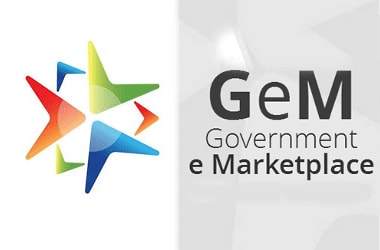 5 States and a Union Territory (UT) have formally adopted the Centre’s Government e-Marketplace (GeM) initiative. 5 States and a Union Territory (UT) have formally adopted the Centre’s Government e-Marketplace (GeM) initiative.
They are Andhra Pradesh, Assam, Gujarat, Telangana, Arunachal Pradesh and Puducherry (UT).
In this regard, these states/UT have signed memorandum of understanding (MoU) to join GeM initiative.
Four more states including Uttar Pradesh, Tamil Nadu, Jharkhand and Haryana, will ink such MoU soon.
GeM is an Online Market platform to facilitate procurement of goods and services by various Ministries and agencies of the Government.
It aims to enhance transparency, efficiency and speed in public procurement of goods and services and eliminate corruption.
It functions under Directorate General of Supplies and Disposals (DGS&D), Union Ministry of Commerce and Industries. GeM is a completely paperless, cashless and system driven e-market place that enables procurement of common use goods and services with minimal human interface.
Presently more than 40000 products in about 150 categories and hiring of transport service are available on GeM POC portal.
|
▼ Mission Parivar Vikas: New population stabilisation mission [07-12-17]
 Mission Parivar Vikas will focus on 146 high fertility districts in 7 states with high TFR. Mission Parivar Vikas will focus on 146 high fertility districts in 7 states with high TFR.
Under this, specific targeted initiatives shall be taken for population stabilisation through better services delivery.
The scheme was launched at Jansankhya Sthirita Kosh (JSK) to mark the World Population Day.
Mission Parivar Vikas is a new initiative conceived by the Ministry with a strategic focus on improving access through provision of services, promotional schemes, commodity security, capacity building, enabling environment and intensive monitoring.
The team is known for undertaking micro-planning for these districts and developing need-based programmes to address TFR.
The Health Minister also advised the officials to undertake half yearly review of the programme and correlate the achievements with time to gauge whether the programme is moving in the right direction or not.
GoI has enhanced the basket of contraceptive choices to meet the changing needs of people and have taken steps to ensure quality assured services and commodities are delivered to the last-mile consumers in both rural and urban areas.”
A new injectable in the public health system under the “Antara” program was launched along with a new software – Family Planning Logistics Management Information System (FP-LMIS).
The latter is designed to provide robust information on the demand and distribution of contraceptives to health facilities and ASHAs to strengthen supply chain management.
As a part of the new communications campaign linked to the rollout, the Health Minister also launched a new consumer friendly website on family planning.
There is also a 52 week radio show for couples to discuss issues related to marriage and family planning, which will be aired across the country.
The Health Minister further highlighted the life cycle approach of the Ministry and stated that a continuum of care approach has been adopted by the Ministry with the articulation of ‘Strategic approach to Reproductive Maternal, Newborn, Child and Adolescent health (RMNCH+A), bringing focus on all the life stages.
Population dynamics have a significant influence on sustainable development. The changes in population growth rates and age structures are closely linked to national and global developmental challenges and their solutions.
The issue of population stabilization is so gigantic in its proportion that the government alone cannot address the issue and thus the collective involvement of NGOs, private sector and corporate sector shall play a pivotal role.
|
▼ Residential schools for girls from SC community [07-11-17]
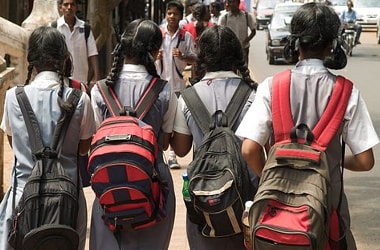 Union Minister Thawar Chand Gehlot on 7 July 2017 said that the Union Government has proposed to introduce a scheme to open residential schools for scheduled caste girls in educationally backward districts. Union Minister Thawar Chand Gehlot on 7 July 2017 said that the Union Government has proposed to introduce a scheme to open residential schools for scheduled caste girls in educationally backward districts.
Residential schools will have classes from VI to XII and 70 per cent of the seats will be reserved for SC girls and the remaining for those from BPL families in other categories.
Union Government is committed to ensuring the welfare of scheduled caste and tribes, OBCs and BPL families through the proper implementation of all centrally-sponsored social security and welfare scheme.
Also, the ministers and officials have been asked to prepare a report on the financial assistance being given under different schemes and by the national financial corporations within a month.
Rashtriya Vayoshree Yojana for senior citizens is also being implemented.
Benefits of these schemes would be given on the first-come-first-serve basis.
In addition to this, the minister also gave away cheques to entrepreneurs from the SCs and launched a website of Venture Capital Fund for SCs and a brochure on the subject.
Haryana: Know More
- Haryana is a North Indian state surrounding New Delhi on 3 sides.
- The Yamuna River runs along its eastern border with Uttar Pradesh.
- Shared with Punjab, the state capital Chandigarh is known for its modernist buildings and gridlike street plan designed by Swiss architect, Le Corbusier.
- The Zakir Hussain Rose Garden features 1,600 species
- Rock Garden showcases sculptures made with recycled materials.
- Capital: Chandigarh
- Districts: 22
- Population: 27.76 million (2016)
- Chief minister: Manohar Lal Khattar
|
▼ MoU for CoE in transfusion medicine in Kolkata: Know more [07-11-17]
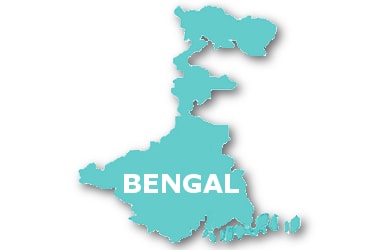 Ministry of Health and Family Welfare signed a memorandum of understanding (MoU) with Government of West Bengal to formalize its support to set up a state-of-the-art Centre of Excellence in Transfusion Medicine at Kolkata. Ministry of Health and Family Welfare signed a memorandum of understanding (MoU) with Government of West Bengal to formalize its support to set up a state-of-the-art Centre of Excellence in Transfusion Medicine at Kolkata.
Government of India has approved this important initiative with an outlay of approximately INR 200 Crores towards equipment, manpower and running costs.
The land for this initiative will be provided free of cost by the State government.
The move intends to strengthen the blood transfusion services in the State and the surrounding region.
Metro Blood Bank Project is conceived to be a Central Sector Scheme of the Ministry of Health and Family Welfare to set up state-of-the-art Centres of Excellence in transfusion medicine in the four metro cities of Delhi, Mumbai, Chennai and Kolkata.
These centres are high volume blood collection centres where there is state-of-the-art technology in transfusion medicine for component separation, processing of blood and quality systems.
Facilities for screening of collected blood by NAT would be made available at these centres and also extended to the other blood banks of the State.
Approval of Union Minister of Health and Family Welfare has been accorded for the first phase, wherein these facilities are to come up in Chennai and Kolkata.
National Blood Transfusion Council under National AIDS Control Organization will be the implementing division of the Ministry for this project.
The MoU for setting up the Metro Blood Bank in Chennai has already been signed on 14th June 2016.
Blood Donations in India: Know More
- India collects near about 11 million blood units every year.
- Nearly 71% of these blood donations are collected through voluntary non-remunerated donors.
- A recently concluded assessment of licensed Blood Banks of India revealed that the average blood donation rate in India is 0.8, which is lower than many high income countries.
- This is leading to a shortfall in quantum and access to safe blood in select hard-to-reach areas of the country.
- Rational use of blood also needs to be ensured to enhance utilization, as one unit of blood can benefit more than one beneficiary through separation into red cells, plasma, platelets.
|
▼ Law Commission of India mandates marriage registration vital! [07-6-17]
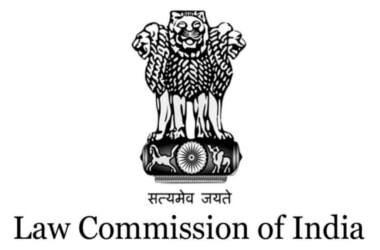 The Law commission of India recommended to make marriage registration compulsory in its 270th Report called ‘Compulsory Registration of Marriages’ submitted to the Government. The Law commission of India recommended to make marriage registration compulsory in its 270th Report called ‘Compulsory Registration of Marriages’ submitted to the Government.
This commission was under the Chairmanship of Dr. Justice B S Chauhan.
The Report starts by recognizing that notwithstanding endeavors from all divisions, the general public is still tormented with social indecencies, for example, polygamy, child marriage and gender violence.
During the UPA Government’s 2nd term, the Rajya Sabha had passed an amendment to make marriage registration necessary under the Registration of Births and Deaths Act, 1969.
The Bill, notwithstanding, couldn’t be passed by the Lok Sabha, and later, lapsed.
Subsequently, in 2014 the same bill was supported by law minister in this present NDA government.
Even, the Supreme Court recommends that the marriage must be enlisted under either the Hindu Marriage Act 1955 or the Special Marriage Act 1954.
The unregistered weddings are not considered as ill-conceived, but rather the Indians need to obligatorily enlist their marriage.
Therefore, it is being assumed that the present government is in favour of these recommendation, and they may bring and introduce this bill again freshly.
Enlistment of a marriage under any of the predominant marriage Acts, or some other custom or individual law identifying with marriage will be adequate.
A different independent enactment may not be required insofar as a revision is made to the Births and Deaths Registration Act to incorporate Marriages also.
This Bill would supplement the area of family laws that as of now exist and is not gone for evacuating, cancelling or correcting particular religious/social practices and laws that are acknowledged under individual laws prevailing in India.
The subject of individual laws is wide and complex, and this report is gone for making essentially a procedural change to make the marriage registration compulsory.
The Law commission also recommended the penalty for non-compliance of this act.
It proposed that individual may be charged five rupees per day in case of failing.
Law Commission
- Law Commission of India is an official body built up by a request of the Government of India.
- Its main work is to work for reform in law. Its members are essentially includes legitimate specialists. The Commission is set up for a fixed period and fills in as an advisory body to the Ministry of Law and Justice.
- The 1st Law Commission was built up during the British Raj period in 1834.
- The 1st Law Commission of independent India was set up in 1955 for a three-year term. From that point forward, twenty more Commissions have been set up.
- The twentieth Law Commission was set up in 2013 under the Chairmanship of Supreme Court Judge, D.K Jain.
- The present Law Commission was set up in 2015, and has tenure up to 2018.
|
▼ EC’s special drive to maximize voter registration [07-3-17]
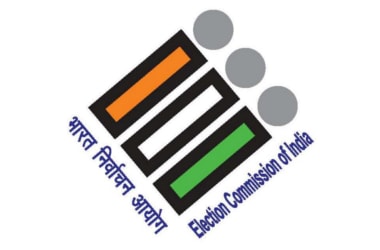 Election Commission (EC) has launched nation wide month long special drive from today for maximization of registration of eligible electors with focus on left out eligible young citizens in age group of 18-19. Election Commission (EC) has launched nation wide month long special drive from today for maximization of registration of eligible electors with focus on left out eligible young citizens in age group of 18-19.
During the drive, the EC will remove names of registered dead electors, if any, from electoral rolls.
During the month of June , the election officials have completed preparatory work like identification of critical gaps in existing electoral rolls, strengthening of infrastructure and sensitization of ground level electoral machine.
The EC has also sent communication to all recognised political parties seeking their cooperation for success of the Special Drive.
During the Special enrollment Drive, which will be completed by 31st July, special attention would be given receiving Form 6 for enrolment of new electors and Removal of names of registered dead electors, if found any.
|
▼ First ever industry academia National Biopharma Mission launched [07-3-17]
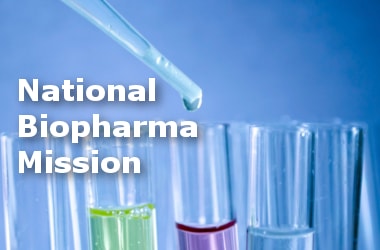 The Cabinet Minister for Science and Technology, Earth Sciences, Environment, Forests and Climate Change, Harsh Vardhan, on 30 June 2017 launched a first ever Industry-Academia mission. The Cabinet Minister for Science and Technology, Earth Sciences, Environment, Forests and Climate Change, Harsh Vardhan, on 30 June 2017 launched a first ever Industry-Academia mission.
The National Biopharma Mission was launched to accelerate biopharmaceutical development in India. Under the Mission, the government launched a programme named Innovate in India (i3) that will witness an investment of USD 250 million with USD 125 million as a loan from World Bank.
The i3 aims to create an enabling ecosystem to promote entrepreneurship and indigenous manufacturing in the sector.
The aim of the Mission is to enable and nurture an ecosystem for preparing India’s technological and product development capabilities in biopharmaceuticals to a level that will be globally competitive over the next decade.
It also looks forward to transform the health standards of India’s population through affordable product development.
The Mission will provide a holistic and integrated approach to strengthen and support the entire product development value chain for accelerating the research leads to product development.
It will help not only in immediate product development addressing public health needs, but will also help to create an ecosystem which will facilitate development of a continuous pipeline of products.
The Mission will be implemented by the Biotechnology Industry Research Assistance Council (BIRAC), a Public Sector Undertaking of Department of Biotechnology.
The National Biopharma Mission will bring together expertise from national and international corridors to provide strategic guidance and direction to move promising solutions through the product development value chain.
As a flagship programme of the Government of India in collaboration with the World Bank, the mission promises to boost the growth curve for domestic biopharma in India by accelerating the translation of research concepts into viable products, supporting clinical validation, enabling sustainable networks for collaboration between industry and academia, and supporting entrepreneurial ecosystem amongst many others.
At present, India has only 2.8 per cent share in the global biopharmaceutical market. The programme program aims to increase this to 5 per cent resulting in an additional business opportunity of USD 16 billion.
National Biopharma Mission
- The mission aims to enable and nurture an ecosystem for preparing India’s technological and product development capabilities in biopharmaceuticals to be globally competitive level over the next decade.
- It will also strive to transform the health standards of India’s population through affordable product development
- The mission will be implemented by Biotechnology Industry Research Assistance Council (BIRAC), a PSU of Department of Biotechnology.
- It will bring together expertise from national and international corridors to provide strategic direction and guidance to move promising solutions through the product development value chain.
- It will provide a holistic and integrated approach to strengthen and support the entire product development value chain for accelerating the research leads to product development.
- This will help not only in immediate product development for addressing public health needs, but also help to create an ecosystem which will facilitate development of a continuous pipeline of products.
- The mission will concentrate on development of specific products such as vaccines, medical devices, biotherapeutics and diagnostics etc.
- Besides, it will also work on establishment of shared infrastructure and facilities.
- It will help in building and strengthening domain specific knowledge and management skills at the same time creating and enhancing technology transfer capabilities in public and private sector.
|